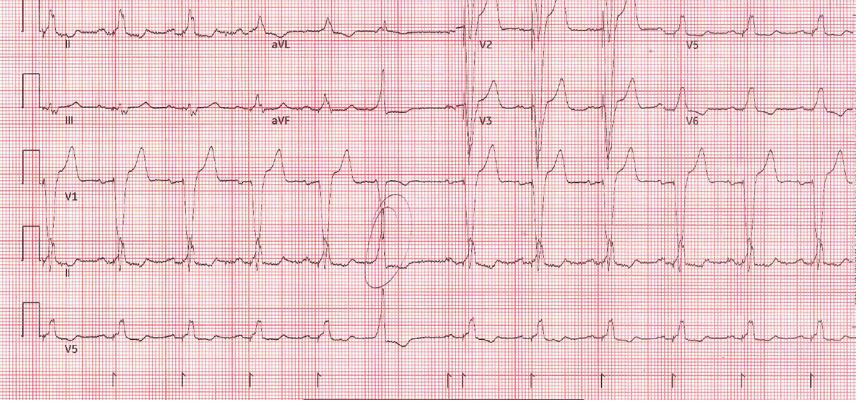Search
Presentation Details
| The Thirteenth Lead on the Twelve Lead ECG |
| Luke J Curran1, Esther Kim2, Deborah C Richman1 1Department of Anesthesiology, Stony Brook Medicine, Stony Brook , NY, United States 2Renaissance School of Medicine, SUNY Stony Brook , Stony Brook, NY, United States |
CASE PRESENTATION: A 66 y/o female presented to the pre-operative assessment clinic prior to a bladder stimulator implantation procedure. Indication for the procedure is treatment of a neurogenic bladder associated with her severe multiple sclerosis.She denied any cardiac history or previous cardiac surgeries. The preoperative ECG demonstrated pacer spikes on the pacing strip and artifact interference was noted in some of the leads. Concern for a malfunctioning pacemaker was raised. On further questioning, our patient told us she had an existing nonfunctioning bladder stimulator which would be removed when the new stimulator was placed. This likely explained the pacing spikes seen on the ECG. DISCUSSION: The pacer strip - aka the 13th lead is seen at the bottom of the ECG fig. 1 (often only in the cardiology reader/ billing program, but occasionally on the ECG print out at point of care). One purpose is to inform the automatic computer ECG interpretation. Example: differentiating between RV pacing and biventricular pacing. It is also used for confirmation of pacemaker function. Other implanted electronical devices (neurostimulators and medication pumps) may cause interference on the ECG tracing and the pacer strip. The presence of a pacer strip can help the clinician differentiate between poor quaity ECGs; movement or lead artifact; and also diagnose cardiac implanted pacemaker device malfunction, CONCLUSIONS: We use the case as a springborad for a review of the different devices and their impacts on ECGs and the pacer strip.The additional information elicited from the '13th lead' may be crucial in determining the device function and provide information on the patient's comorbidities and improve perioperative management and outcomes.  |